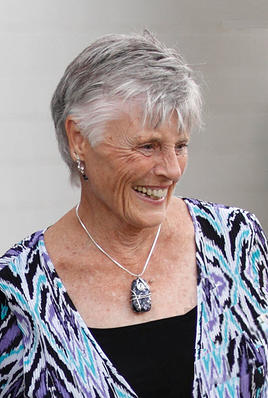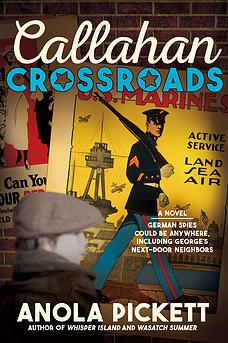“Want to go in on this?” my friend Stacey Hurlin asked in an email proposing a unique way to honor our friend, Phyllis Khare, who—on her birthday—was slated to give us a mini-tutorial on writing effective blog titles. “Any thought?” Stacey prodded.
Even though Stacey’s track record makes it wise to say yes, I thought, No, we shouldn’t do it. Stacey launched award-winning First Friday Art Walks, successful women’s crisis center fundraising events, and international small works exhibits featuring over 300 artists. For Phyllis’s birthday, Stacey wanted to surprise her during class with iced cupcakes topped with tiny posters bearing social media logos. Clever, right?
But a traumatic brain injury I sustained in a car accident four years ago skews my thoughts towards the glass-empty side. Phyllis, a social media guru, vigorously consumes every class minute trying to transmit her mercurial mind’s contents to ours. Mightn’t she feel miffed about us diverting our attention? In the cupcake photo Stacey sent, turquoise icing coiled near the curly edges of pastel paper cups. Couldn’t icky icing end up on—or worse yet inside— students’ keyboards? Stacey proposed buying healthier cupcakes than the ones pictured. No turquoise icing! But our town is marbled with foodies who embrace conflicting opinions about what’s good to eat. Wouldn’t class members regard gluten, sugar, fat, even the mere concept of cupcakes revolting?
Yes! Yes! Yes! I concluded. So I shot off a curmudgeonly, wet-blanket email to Stacey expressing my concerns.
Ha! Stacey’s entrenched creativity easily survived my feeble attempts to dispel it. Recognizing the futility of searching for cupcakes acceptable to divergent palates, Stacey, herself, baked wheat-based and gluten-free versions. Some she topped with sugarless cream cheese icing tinted pink with beet juice.
While constructing mini-posters of social media logos, Stacey chose vivid versions. She foresaw possibilities that Phyllis later fulfilled by enticing her grandkids to play games with the toddler-friendly posters after the cupcakes were gone. Before they were gone, Stacey’s Pinterest poster towered above the rest: the P, she explained, stood not just for Pinterest but also for Phyllis, our ebullient teacher.
The silver platter Stacey grabbed from a cupboard, the one she stacked concentric circles of cupcake tiers on, turned out to be a lazy Susan. So, although Phyllis did at first protest losing precious class minutes to birthday cake frivolity, when she spotted the vibrant logos and her fingers grazed the silver platter and the cupcakes spun around, the birthday girl and all of us clustered around her sensed how magical the moment was that Stacey had made.
What if, instead of discouraging Stacey, I’d offered to work alongside her? How much fun did my curmudgeonly attitude cost me? How much healing laughter did I forfeit to fear?
Four years later I’m nearly done grieving the changes I experienced after a drunk dental hygienist rammed my car at 11 AM on a drizzly summer Saturday while my Camry and I were stopped at a red light. Enough already with the glass-empty thinking! When you’re lucky, a red light, a solid stop, is followed by a start. One day, in a room filled with sunlight, cupcakes spun on a silver platter amid a circle of bright, happy women. And I was there. I saw that.
#TBI/PTSD
#SayYesToCreativity
#SocialMediaMarketing

Say Yes to Creativity Every Day


